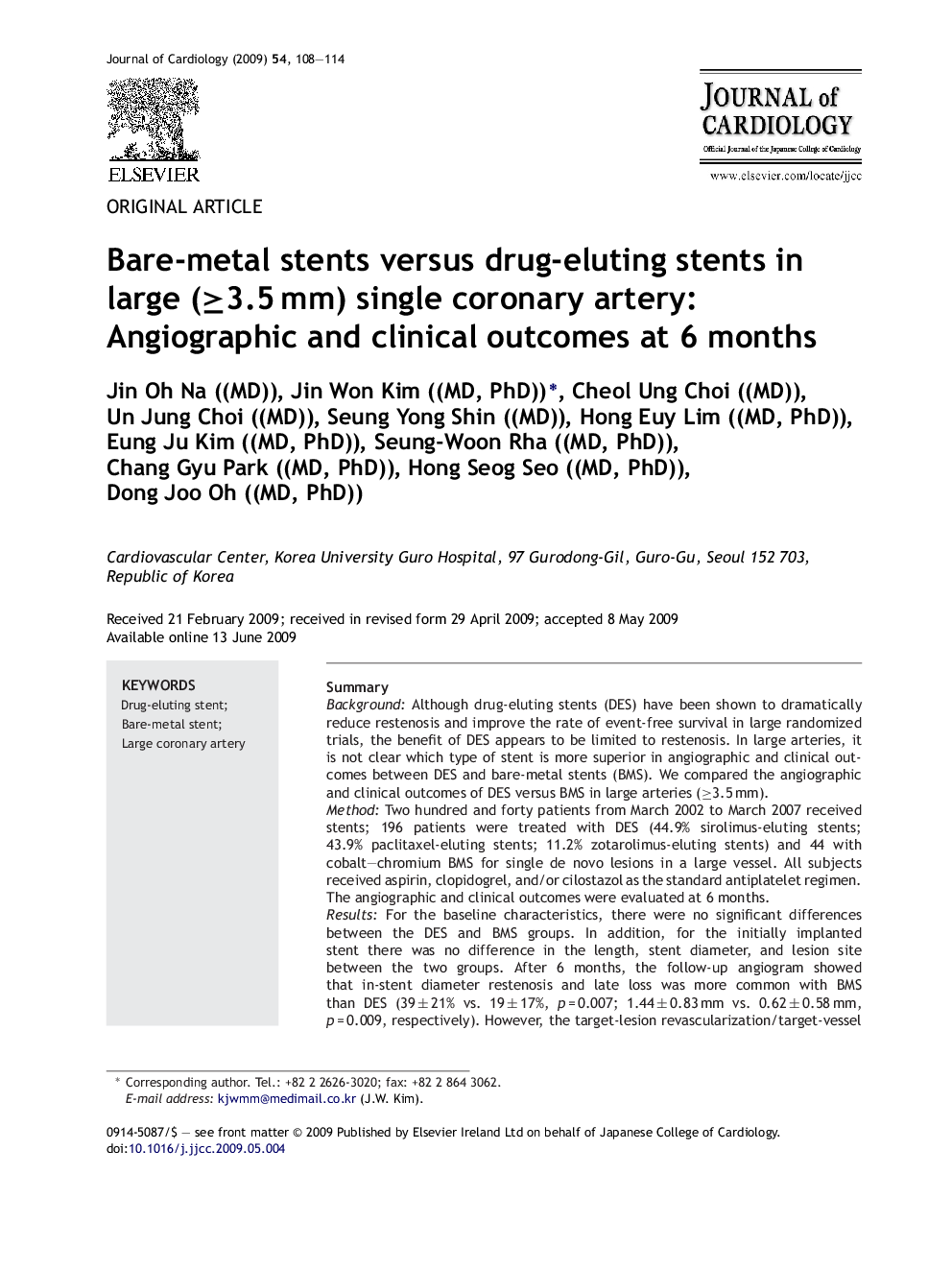| کد مقاله | کد نشریه | سال انتشار | مقاله انگلیسی | نسخه تمام متن |
|---|---|---|---|---|
| 2963756 | 1178573 | 2009 | 7 صفحه PDF | دانلود رایگان |

SummaryBackgroundAlthough drug-eluting stents (DES) have been shown to dramatically reduce restenosis and improve the rate of event-free survival in large randomized trials, the benefit of DES appears to be limited to restenosis. In large arteries, it is not clear which type of stent is more superior in angiographic and clinical outcomes between DES and bare-metal stents (BMS). We compared the angiographic and clinical outcomes of DES versus BMS in large arteries (≥3.5 mm).MethodTwo hundred and forty patients from March 2002 to March 2007 received stents; 196 patients were treated with DES (44.9% sirolimus-eluting stents; 43.9% paclitaxel-eluting stents; 11.2% zotarolimus-eluting stents) and 44 with cobalt–chromium BMS for single de novo lesions in a large vessel. All subjects received aspirin, clopidogrel, and/or cilostazol as the standard antiplatelet regimen. The angiographic and clinical outcomes were evaluated at 6 months.ResultsFor the baseline characteristics, there were no significant differences between the DES and BMS groups. In addition, for the initially implanted stent there was no difference in the length, stent diameter, and lesion site between the two groups. After 6 months, the follow-up angiogram showed that in-stent diameter restenosis and late loss was more common with BMS than DES (39 ± 21% vs. 19 ± 17%, p = 0.007; 1.44 ± 0.83 mm vs. 0.62 ± 0.58 mm, p = 0.009, respectively). However, the target-lesion revascularization/target-vessel revascularization, and total major adverse cardiac events showed no significant differences between the groups (5.3% vs. 3.6%, p = 0.62; 5.3% vs. 4.6%, p = 0.86, respectively).ConclusionThe DES and cobalt–chromium BMS placed in large coronary arteries showed equally favorable 6-month clinical outcomes, although the 6-month angiographic results appeared more favorable in the DES group than in the BMS group.
Journal: Journal of Cardiology - Volume 54, Issue 1, August 2009, Pages 108–114